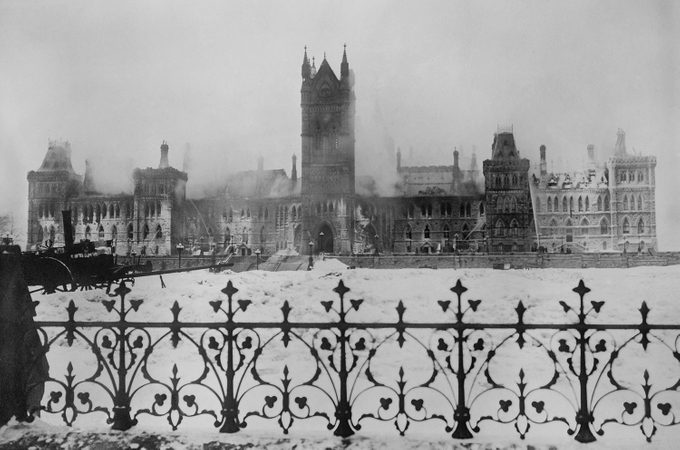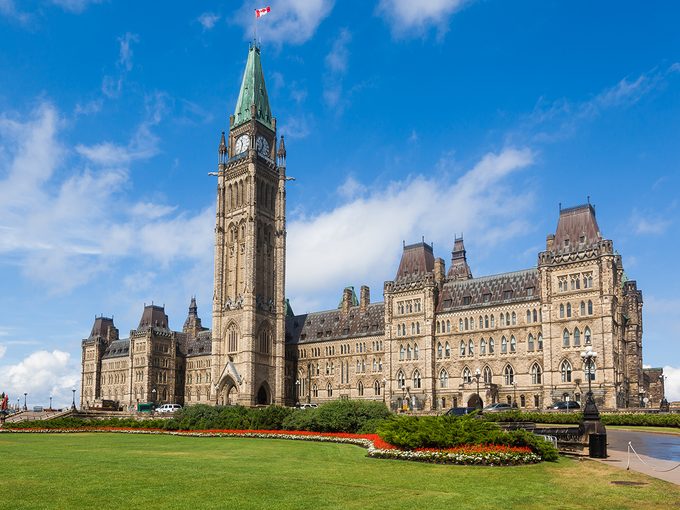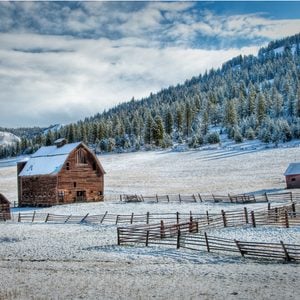The Day Canada’s Parliament Building Caught Fire
More than 100 years later, the cause of the devastating Parliament Building fire of 1916 remains a mystery.
The First World War entered its third year in 1916, but the worst was yet to come for Canadian troops on the Western Front. More than 6,500 Canadians had been killed, captured or wounded in the Second Battle of Ypres in Belgium the previous May, a brutal event that also saw the first mass use of poison gas by the German Empire. While the demand for war supplies and a boom in agriculture meant that unemployment was virtually non-existent in Canada by 1916, the uncertainty surrounding the Great War weighed heavily on Canadians at home and abroad—many had initially expected it to be a short and cheap war.
And so, when a fire raged through the Parliament Building in Ottawa—one of Canada’s most enduring symbols—on the evening of Feb. 3, claiming seven lives and destroying most of the structure, it immediately came to be regarded as one of the darkest chapters in the country’s history.

Fire Breaks Out
The fire started at 8:37 p.m. in the Centre Block near the House of Commons. Francis Glass, an MP from Nova Scotia, was in the Reading Room when he noticed a pile of papers aflame. He quickly alerted a nearby constable, but because the room was lined with varnished wood panelling and filled with newspapers, the flames engulfed it within minutes. Meanwhile, in the House of Commons, MPs were in the middle of a debate. The topic? The high prices of fish.
A doorman rushed into the chamber and told everybody to evacuate; by then the fire had spread into the corridors. Thick, black smoke washed over the journalists seated in the press gallery. Sir Robert Borden, prime minister at the time, was in his office and reportedly made his way to the exit on his hands and knees. Amidst the pandemonium, it was George Adam Elliott, a farmer and MP from North Middlesex, Ontario, who pushed his colleagues to form a human chain to help others escape.
There was no stopping the fire, however. Staff members raced to save whatever objects they could. By midnight, the Centre Block’s Victoria Bell Tower collapsed. In the early hours of the morning, firefighters had the flames mostly under control, but the damage was done: thousands of historical records and treasures were destroyed and seven people had perished, including Bowman Brown Law, an MP from Yarmouth, Nova Scotia. Only the Library of Parliament remained, thanks to an iron fire door and a librarian who had the presence of mind to close it.
The Aftermath
“The loss the country felt must have been almost unimaginable,” Mark Bourrie, an Ottawa historian and author of Canada’s Parliament Buildings, said in 2019. “Something central to the soul of Canada was suddenly gone.” But the show went on—after all, Canada was at war. The next afternoon, while Parliament was still burning, Borden and his Cabinet met at the Fairmont Château Laurier and chose the Victoria Memorial Museum as a temporary chamber.
On Sept. 1, construction began on the new Parliament Building. The Centre Block would be one storey higher than the original, while its interior walls would be limestone and marble instead of flammable wood. Parliament Hill opened again on Feb. 6, 1920.

What Caused the Parliament Fire?
Though the exact cause of the 1916 Parliament Building fire was never determined, rumours circulated that it was not accidental, but the work of German saboteurs.
American historian Herbert von Feilitzsch is one of the theory’s supporters. According to the author of The Secret War on the United States in 1915, Germany had a standing order to attack Canada during the First World War. “That order was known to many Germans even along the border,” von Feilitzsch said in 2016. “The Germans were recruiting German-Americans and German-Canadians to do that.” If the Germans were indeed responsible for the fire, von Feilitzsch theorizes that saboteurs could have used a “pencil bomb,” a cigar-shaped explosive that could be set to detonate at any time; German agents used one such bomb to set fire to a munitions depot in New York Harbor later that year.
The mystery of the Parliament Building fire of 1916 may never be solved, but two things are certain: Canada emerged from the wreckage of the First World War victorious, and the rebuilt Parliament Building continues to stand tall over the southern banks of the Ottawa River. A massive renovation project was launched in 2002; the West Block was completed in 2018 and the Centre Block is expected to be finished after 2030.
“It is a national icon that needs to be protected,” minister of national defence Anita Anand said in 2021, “so that it can continue to serve our parliamentary democracy into the next century.”
Next, read the terrifying tale of the Great Matheson Fire—the worst forest fire in Canadian history.






